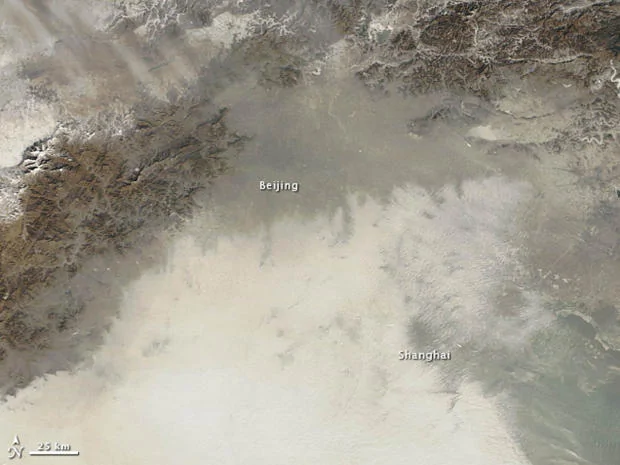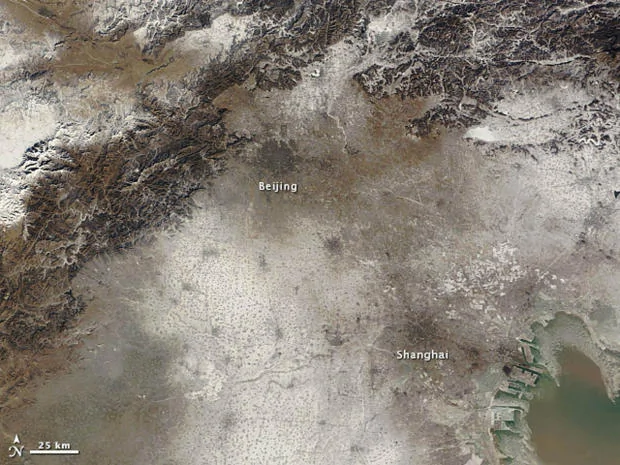美帝国主义妄图窥探我国,NASA卫星本月14日用高清度摄像机偷拍北京,结果傻了。

An image taken by NASA's Terra satellite on January14 shows Beijing and the surrounding area smothered by a layer of extreme air pollution.
/NASA Earth Observatory
美国航空航天局发布的北京空气污染的图像
China's capital city of Beijing has been swamped by off-the-charts levels of air pollution in January. New images from NASA's Earth Observatory satellite Terra shows the choking layer of smog that has descended over the city.
The first image, from January14, shows China smothered by a layer of haze. The grey and yellow-tinged clouds visable on the map are areas heavily affected by air pollution. At the time the image was taken, ground sensors at the U.S. Embassy in Beijing recorded PM2.5 measurements of291. According to the World Health Organization, PM2.5 levels above25 are considered unsafe.

An image taken by NASA's Terra satellite of Beijing and the surrounding area on January3.
/NASA Earth ObservatoryThe second image, taken on January3, presents a stark contrast to the cloudy soup in the previous picture. The country is clearly visable and tinged white from recent snowfall.
Beijing and the surrounding area have been grappling with record-breaking levels of air pollution in recent days. PM2.5 measurements are taken on a scale from0 to500. Over the weekend of Jan12-13, Beijing saw levels over700.
By Monday, levels had declined to about350 micrograms on the Beijing government scale-- down from its peak but still way above the level of25 considered safe by the World Health Organization.
PM2.5 are tiny particulate matter less than2.5 micrometers in size, or about1/30th the averageof a human hair. They can penetrate deep into the lungs, and measuring them is considered a more accurate reflection of air quality than other methods.
The Beijing Shijitan Hospital received20 percent more patients than usual at its respiratory health department, Dr. Huang Aiben said. Most patients were coughing and sought treatment for chronic bronchitis, asthma and other respiratory illnesses, Huang said.
"Because these dust particles are relatively fine, they can be directly absorbed by the lung's tiny air sacs. The airway's ability to block the fine dust is relatively weak and so bacteria and viruses carried by the dust can directly enter the airway," Huang said.
Air pollution is a major problem in China due to the country's rapid pace of industrialization, reliance on coal power, explosive growth in car ownership and disregard for environmental laws. It typically gets worse in the winter because of weather conditions and an increase in coal burning for heating needs.
http://www.cbsnews.com/8301-205_162-57564051/nasa-releases-images-of-beijing-air-pollution/



















